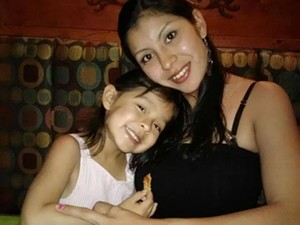
Renée Davis
On Friday, October 21, 23-year-old mother of three, Renée Davis was killed, in her living room, by two police officers making a “wellness check” on her. Renée Davis lived, and died, on the Muckleshoot Reservation, in Washington State. Renée Davis is the fifth Native American woman to be killed by police this year. On March 27, 27-year-old Loreal Juana Barnell-Tsingine was shot five times by a police officer in Winslow, Arizona. In January, in Washington State, Jacqueline Salyers was killed under disputed circumstances. In February, in Alaska, police shot and killed Patricia Kruger. In the same month, in Arizona, police killed Sherrisa Homer. Last year, police did not kill any Native American women. This year, it’s fast becoming the new normal. Native Americans top the charts on police killings.
According to Renée Davis’ sister, Danielle Bargala, Renée Davis was five months pregnant and struggling with depression. On Friday evening, Renée Davis texted someone that she was in a bad way, and that person called the police to check in on her: “It’s really upsetting because it was a wellness check. Obviously, she didn’t come out of it well.” It’s also really upsetting because it repeats an all-too-familiar script. Police encounters with Native women struggling with mental illness too often result in Native women lying dead in their homes or on the streets, more often than not as a consequence of seeking help: “The high rate of these killings is also a result of the comparative dearth of mental healthcare services for Native Americans, says Bonnie Duran, an Opelousas/Coushatta tribe descendent … People threatening suicide and experiencing other mental health crises made up one-quarter of all those killed by cops in the first half of 2016, according to data collected by the Washington Post; they made up nearly half of the Native deaths.”
The same happens in jails, as the death of Christina Tahhahwah demonstrates, and the jailhouse death of Sarah Lee Circle Bear reminds us that a Native woman in excruciating pain and agony, crying for help, will be ignored and worse.
According to today’s Washington Post “Fatal Force Index,” as of today, “785 people have been shot and killed by police in 2016.” Of those, Renée Davis is the most recent. Of the 785, 33 were women. Five of those women were Native American. According to The Guardian database, police have shot and killed 875 people this year. Where last year, police shot and killed 13 Native Americans, this year police have already shot and killed 14 Native Americans, of whom five were women. This means that, as of now, Native Americans, at 5.91deaths per million, top the charts on police killings.
Absolutely nothing out of the ordinary happened to Renée Davis, just another Native woman who needed and sought help and was killed by the State for so doing and so being. Danielle Bargala remembers her sister, “She was such a soft person.” Renée Davis leaves behind three children, whose ages are 2, 3 and 5: “Davis’ family is now trying to figure out where her children will go. For the moment … they are staying with relatives.”
(Photo Credit: Black Girl Tragic)
